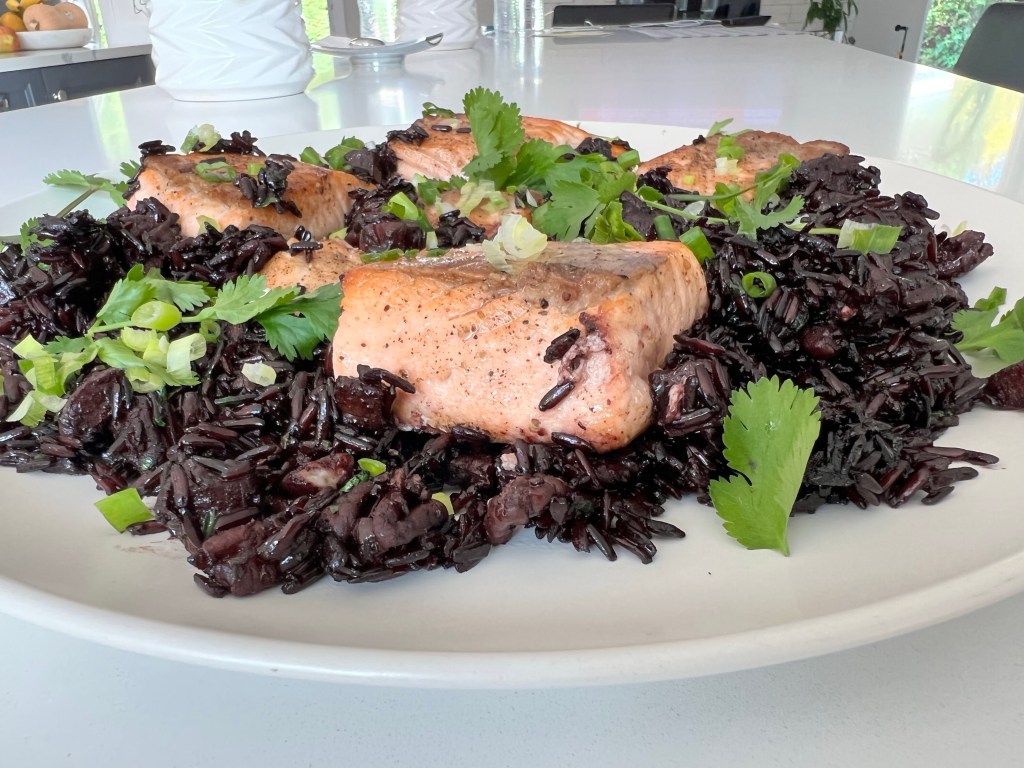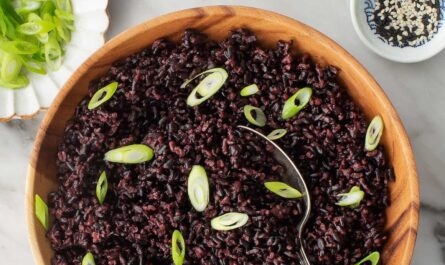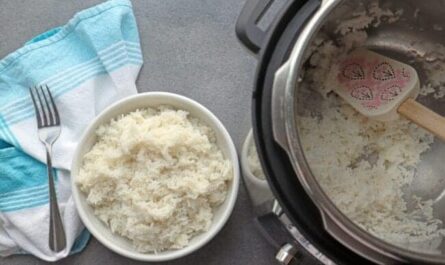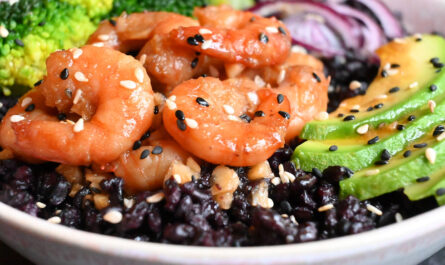When one thinks of Thai cuisine, the mind often wanders to the vibrant spices, aromatic herbs, and the harmonious blend of sweet, sour, salty, and spicy flavors. However, another lesser-known yet remarkably nutritious ingredient is the focus of this article: black rice in Thai food. Known as ‘forbidden rice’ in some cultures, black rice boasts a rich history and a plethora of health benefits. In this article, we will delve into the fascinating world of black rice in Thai culinary traditions, uncovering its nutritional value, culinary uses, and its growing popularity among sushi lovers and health enthusiasts alike.

The Historical Significance of Black Rice
Black rice, often referred to as ‘forbidden rice’, has a storied past. Historically, it was revered in ancient China as a food for royalty, believed to increase longevity and health. Today, it remains a staple in various Asian cuisines, especially in Thailand, where it complements the country’s diverse dishes.
Why Is It Called ‘Forbidden Rice’?
The moniker ‘forbidden rice’ stems from its exclusive consumption by the Chinese emperors due to its rarity and nutritional value. While it was forbidden for commoners, today, it is celebrated globally for its health benefits and unique taste.
Nutritional Benefits of Black Rice
Black rice is not only visually striking with its deep purple hue but also a powerhouse of nutrients. It is rich in antioxidants, particularly anthocyanins, which contribute to its color and offer numerous health benefits.
Rich in Antioxidants
The dark color of black rice is due to its high antioxidant content, similar to blueberries and blackberries. These antioxidants help in reducing inflammation and protecting against cell damage.
High Fiber Content
Black rice is an excellent source of dietary fiber, which aids in digestion and helps in maintaining a healthy weight. It provides a feeling of fullness, making it a great addition to any diet, especially for those looking to manage their weight. Learn more about its weight loss benefits here.
Gluten-Free Grain
For individuals with gluten intolerance or celiac disease, black rice serves as a safe and nutritious alternative to wheat-based grains.
Culinary Uses of Black Rice in Thai Cuisine
In Thai cuisine, black rice is celebrated for its versatility. It is used in both sweet and savory dishes, adding a nutty flavor and chewy texture.
Popular Thai Dishes Featuring Black Rice
Some popular Thai dishes incorporating black rice include black rice pudding, a delectable dessert made with coconut milk and palm sugar, and black rice salad, a refreshing and nutritious option. For more creative black rice recipes, visit this page.
The Role of Black Rice in Thai Desserts
Black rice is often used in traditional Thai desserts, lending its distinct color and flavor. These desserts are not only a treat for the taste buds but also provide nutritional benefits.
The Growing Popularity of Black Rice Among Sushi Enthusiasts
In recent years, sushi lovers have embraced black rice for its health benefits and unique flavor profile. Its chewy texture and nutty taste make it an excellent substitute for traditional sushi rice. Discover tips on choosing the right rice for sushi here.
Black Rice Sushi: A New Trend
Black rice sushi is gaining popularity for its aesthetic appeal and nutritional benefits. Its vibrant color adds a visual appeal, making sushi platters not only delicious but also Instagram-worthy.
Health Benefits of Incorporating Black Rice into Your Diet
Beyond its culinary allure, black rice offers numerous health benefits. It is known to aid in reducing the risk of chronic diseases and promoting overall well-being.
Role in Cancer Prevention
Studies suggest that the antioxidants present in black rice may help in reducing the risk of certain cancers. For more information on its potential in cancer prevention, refer to this article.
Impact on Heart Health
Black rice is known to lower cholesterol levels and improve heart health. Its rich nutrient profile supports a healthy cardiovascular system.
Tips for Cooking Black Rice
Cooking black rice requires a bit of patience due to its longer cooking time compared to white rice. However, the result is well worth the effort.
Basic Cooking Method
Rinse the black rice thoroughly before cooking. Use a 2:1 water-to-rice ratio and simmer for about 30-35 minutes until tender. For a detailed soup recipe, visit this link.
Enhancing Flavor
Consider cooking black rice in coconut milk or broth for added flavor. Adding herbs and spices can also elevate your dish.
Where to Buy Black Rice
Black rice is available in most health food stores and online retailers. When purchasing, look for organic options to ensure quality and sustainability.
Conclusion: The Future of Black Rice in Thai Cuisine
The use of black rice in Thai food is a testament to the evolving nature of culinary traditions. Its health benefits, along with its unique flavor and aesthetic appeal, make it a valuable addition to any kitchen. As more people discover the wonders of black rice, its popularity is set to soar, especially among those seeking nutritious and delicious food options.

Frequently Asked Questions
Is black rice healthier than white rice?
Yes, black rice is considered healthier due to its higher antioxidant content and nutritional profile.
Can black rice be used in sushi?
Absolutely! Black rice is a popular alternative in sushi making, offering a unique flavor and visual appeal.
What does black rice taste like?
Black rice has a nutty flavor and a chewy texture, making it a delicious addition to both sweet and savory dishes.
This article contains affiliate links. We may earn a commission at no extra cost to you.




